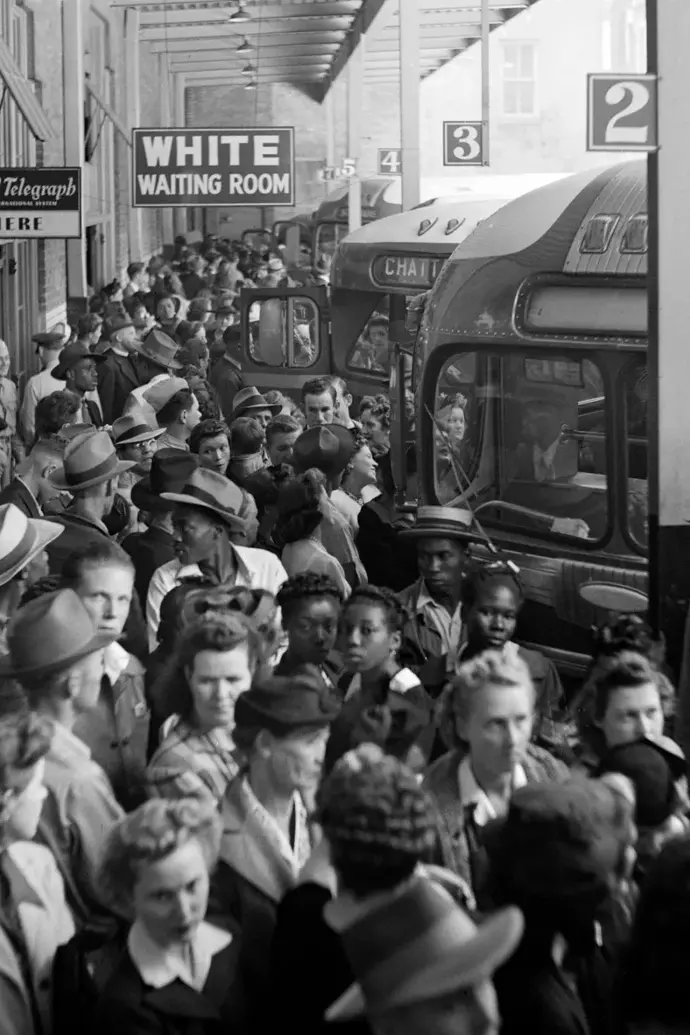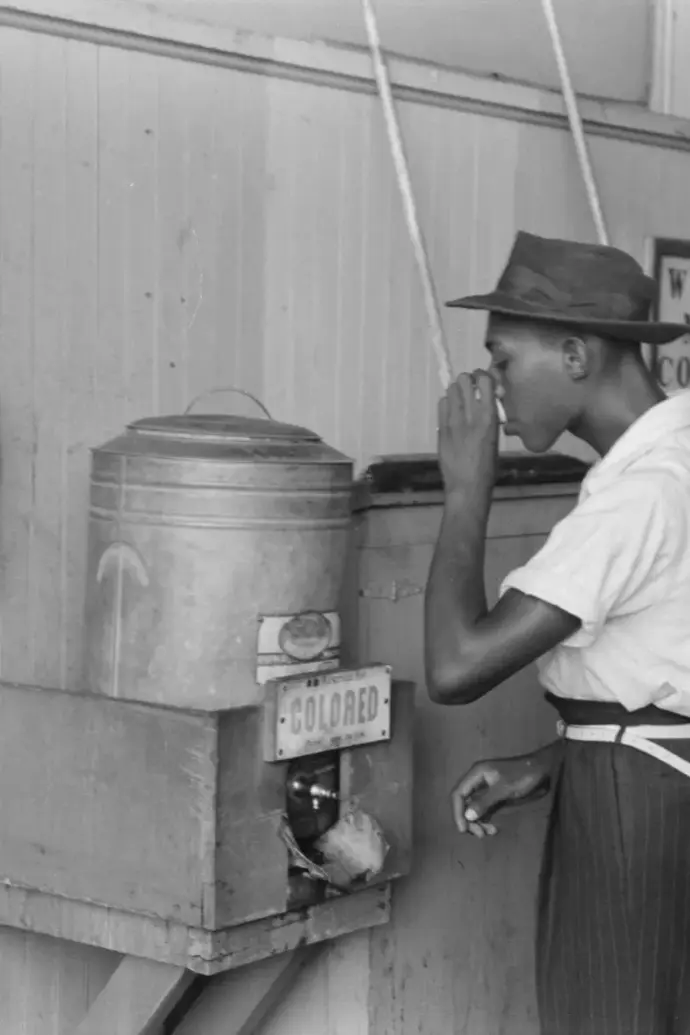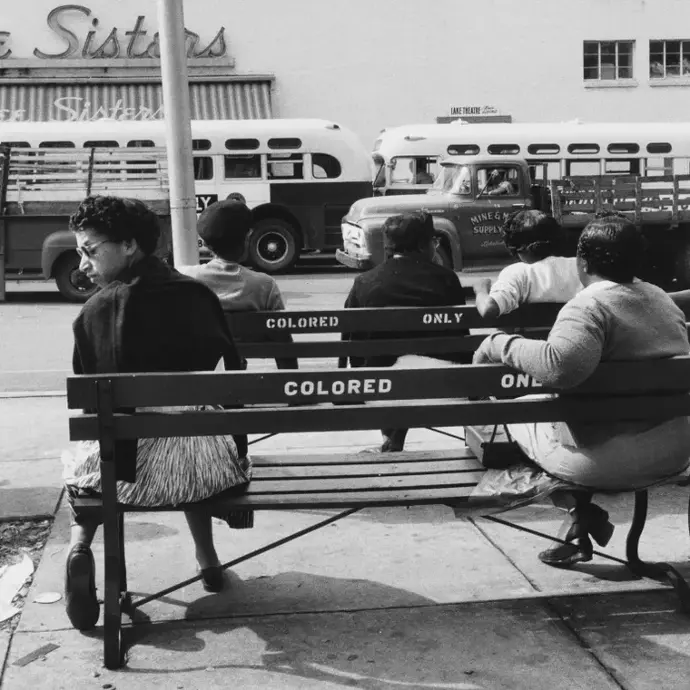Brief history of the beginning of the fight against racial segregation in the USA.
Louisiana is preparing to pardon, 130 years later, Homer Plessy, an icon of civil disobedience after refusing to leave a train car for whites in New Orleans. At the end of the 19th century, 63 years before Rosa Parks refused to give up her bus seat to a white passenger, Homer Plessy, first-class ticket in hand, boarded a train in New Orleans, United States. His instructions were clear: go to the "whites only" car and wait for his arrest.
The incident of June 1892 unfolded as expected: Louisiana's new law relegating black passengers to racially segregated carriages was applied like clockwork. The mestizo's insistence on traveling in a whites-only carriage was not spontaneous: it was an act of civil disobedience that a local civil rights organization had organized to stand up to the law that promoted racism. However, Plessy's arrest led to a landmark Supreme Court case that would provide federal sanction to decades of segregation based on Jim Crow laws.
Now, almost 130 years after Plessy got on that train, his offense is going to be pardoned. In a nod to the historical implications of the 1896 Plessy v. Ferguson ruling, the Louisiana State Board of Pardons has recommended Governor John Bel Edwards pardon Plessy for defying the law. Advocates of the pardon, including the descendants of the two men who gave its name to the lawsuit, say it is an opportunity to correct a centuries-old wrong, with a legacy that still resonates today.
A carefully planned challenge to segregation
The New Orleans shoemaker was a member of the New Orleans Citizens Committee, a group of prominent residents that aimed to challenge segregation in the racially diverse city. The committee chose Plessy to confront a new law requiring "equal but separate" seating for black and white passengers on Louisiana railroads.
The Louisiana Railroad Accommodation Act was just one of numerous segregationist laws passed by state and local officials after the American Civil War during Reconstruction, a period of federal oversight over the former Confederate states that lasted from 1865 to 1877. Southern states replaced the laws of the Reconstruction era with others that forced the separation of the races. Called Jim Crow Laws, these statutes were written taking care of every comma, to the millimeter, addressing (pay lip service) the issue of equality so that the 14th Amendment, which was ratified during Reconstruction and which provided American citizens with protection, was not violated. equal before the law.

Left:
In 1943, the Supreme Court's ruling in the Homer Plessy case led to state-sanctioned segregation everywhere from schools and swimming pools to this Greyhound bus terminal in Memphis, Tennessee.

Right:
An Oklahoma City man drinks at a water fountain marked "colored people only" in 1939.

Five African American women sitting on a bench labeled "Colored People Only" in Lakeland, Florida, circa 1960. Another landmark Supreme Court ruling in the 1950s struck down the "separate but equal" doctrine. It turned out to be just the beginning of the end of legal segregation. There was a lot of work ahead.
By guaranteeing "separate but equal" facilities, the states were nominally complying with the United States Constitution. However, in practice, the "equal" facilities provided to black citizens were often inferior to those enjoyed by whites.
The committee chose Plessy to challenge the law because, although he appeared white (a later brief stated that he was 7/8 white and 1/8 African), his black roots would have required him, by law, to ride on the supposedly equal (but separate from the rest). Plessy's act of civil disobedience followed a careful script and was carried out with the approval of the railroad company, which opposed the law because it required the purchase of additional cars to accommodate black passengers.
Once Plessy boarded the train, a white passenger chosen by the committee objected to his presence and complained to the train conductor about Plessy's presence. When Plessy refused to move to the car designated for black passengers, he confronted a private detective - hired by the committee - who had the right to detain him. Plessy was dragged from the car, charged with violating the Louisiana Railroad Accommodations Act, and duly tried and convicted.
A landmark case in the Supreme Court
Plessy's legal team challenged the conviction and the case ended up in the Supreme Court in May 1896. The defendant was John Howard Ferguson, the judge who had convicted Plessy, which is why the name of the case in the highest American legal court was called Plessy against Fergusson.
During the oral hearing, Albion W. Tourgée, Plessy's attorney, told the court that the law was unconstitutional and violated the equal protection clause of the 14th Amendment. "Its only effect is to perpetuate the stigma of color, to make the curse immortal, incurable, inevitable," he argued.
The court disagreed, ruling 7-1 that the law did not violate the Equal Protection Clause. "The forcible separation of the races...does not abridge the privileges or immunities of the colored man, nor deprive him of his property without due process of law, nor deny him the equal protection of the laws," wrote Justice Henry Billings Brown in the majority opinion. Only Justice John Marshall Harlan dissented.
The case established jurisprudence: by declaring segregation effectively legal, the ruling opened the floodgates for an avalanche of Jim Crow Laws. The case became a precedent for the official segregation of everything from craps tables to drinking fountains and fountains, streetcars and schools.
Plessy's legacy against Ferguson
Civil rights leaders continued to mount legal challenges to the "separate but equal" doctrine. But it remained the valid law until 1954, when it was overturned with the Brown v. Board of Education of Topeka. In this landmark unanimous ruling, the Supreme Court determined that the doctrine was inherently unequal and violated the 14th Amendment.
It was a major legal victory for civil rights activists, who had been attacking the doctrine for decades. The only way to justify such laws was "to think that for some reason black people are inferior to all other human beings," said future Supreme Court Justice Thurgood Marshall, who led the defense team in Brown. "This court should make clear that that is not what our Constitution stands for."
The Brown v. Board was the beginning of the end of legal segregation in the United States. But by then, the damage of "separate but equal" had already been done. The doctrine allowed for the "definitive disenfranchisement of nearly all Southern blacks," journalist Douglas A. Blackmon wrote in his book Slavery By Another Name.
The results of that disenfranchisement still resonate in today's society. The effects of segregation can be seen in persistent social disparities ranging from housing and education to the health and wealth of black Americans. Although the pardon of Homer Plessy will not reverse the damage caused by the "separate but equal" doctrine, its defenders say it is a long-awaited correction of a historical wrong.
"I too lived in the shadow of Plessy v. Ferguson," said Alvin Roche, a member of Louisiana's pardon board, announcing his decision to vote in favor of a posthumous pardon. "It is an honor to vote in favor."

 IHRO NEWS
IHRO NEWS